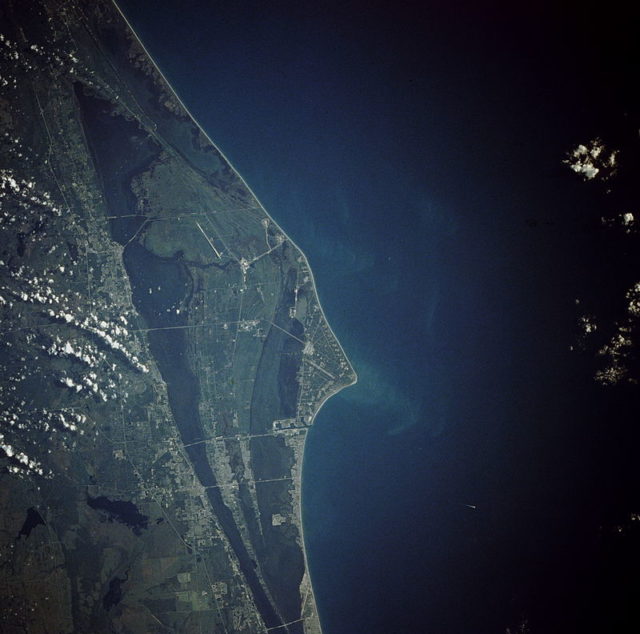In the 1560s, a terrible storm sent three Spanish ships into the bottom of the ocean. The three vessels were headed to Havana, Cuba but the never made it to port.
It’s been speculated that the crew on board had stolen treasure from France and was making a bolt to the island.
Recently, marine experts have found the sunken ships just of the coastline of Cape Canaveral. They had conveniently settled next to the debris from a couple of space launches from Kennedy Space Center.
Among the treasures, archaeologists discovered cannons, symbols of the fleur-de-lis, anchors, and even a French coat of arms. It’s been speculated that these items were stolen from early settlers that were French.

Global Marine Exploration was credited with the discovery and found 22 cannons, a monument made from marble, anchors, a wheel that ground stone, and a scattered ballast with some ammo.
Three of the cannons were bronze. Two of the cannons were 10 feet long, and the other was measured at 7 feet.
The hand-carved monument that was made from marble led scientists to believe that the monument was an indication that this stolen treasure was likely taken from a new world colonisation.
The team shared with the world that all of the artefacts were unearthed in May. However, they wanted to protect the discovery so the finding wasn’t announced to the public.
Global Marine Exploration was delighted to have discovered all of the treasure but it seems that their favourite finding was the three bronze cannons and the marble monument.
It was originally believed that the artefacts were on Ribault’s two lost vessels that were taken down by a powerful storm in the year 1565.
But after further investigation, GME found out that the bronze cannons and the monument were actually not a part of the artefacts located on Ribault’s ships. Instead, they were a part of Fort Caroline, a French Huguenot establishment just outside of Jacksonville.
After diving in a little deeper, the team discovered that the artefacts were actually stolen during a raid from the Spanish in the year 1565.
After the raid, the team believes that the three Spanish ships were making their way over to Cuba when they met the storm that ultimately sent the ships to their doom at the bottom of the ocean.
The debris from the series of shipwrecks span well over four miles. Accompanying the 16th-century ships are vessels from the 19th century, leaving archaeologists very happy with their findings.
The remaining 19 cannons that have been found were made from iron, and there have been a dozen anchors that have been recovered as well.
The findings were a direct result of permits from Florida to investigate Cape Canaveral, which is known as the graveyard for rockets that never made it into orbit.
Along with the ship, the team unearthed hundreds of air force rockets, boats for fishing, and even airplanes, as well as engines. The shipwrecks were resting in the shallow part of the sea where the waters were all 25 feet deep or less.
Due to the shifting level of the sands during storms, the team has found that the cannons would have been covered anywhere from 3 feet off the sea floor all the way to 8 feet off the sand on the sea floor. Every time the wind picks up, the sea bed changes.
Although the cannons and the monument are still resting in the bottom of the ocean, GME hopes that Florida officials will soon approve GME’s requests to bring the artefacts to the surface.
MORE ABOUT HOW THE SPANISH STOLE THE TREASURE
Jean Ribaut was a naval officer for the French navy. He was born in the year 1520 and became known as an explorer as well as a colonial.

Jean was a Protestant, which led him to flee to England before he was sent to jail for his refusal to help set up the frontier of the New World.
After his release, an admiral named Coligny granted him seven ships to help out the Huguenot settlement just off the coast of St. John’s River, Mail Online reported.
Sadly, the colony ran into a bit of a problem when the Spanish government discovered the French settlement that existed on the land that they rightfully claimed. The colony was ordered to be destroyed.
Pedro Menendez de Aviles led the attack and captured both the colony and Jean. The vessel Ribaut was in charge of was driven to flagship on the coast. After Menendez had destroyed the settlement, he ordered the executions of Ribaut and his crew because they were Protestant heretics. The Spanish ships then sunk shortly after they set sail.
